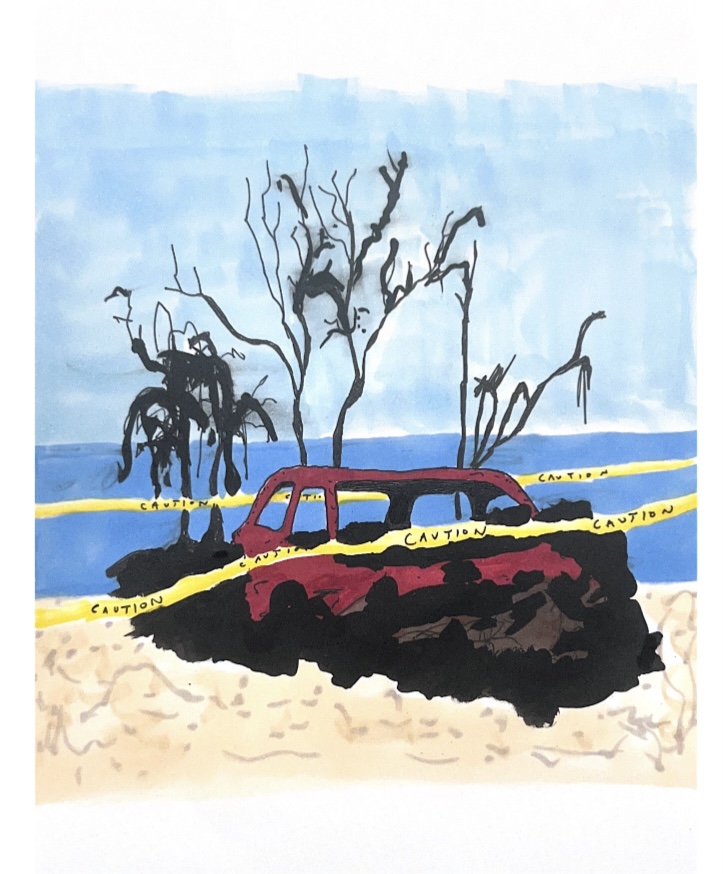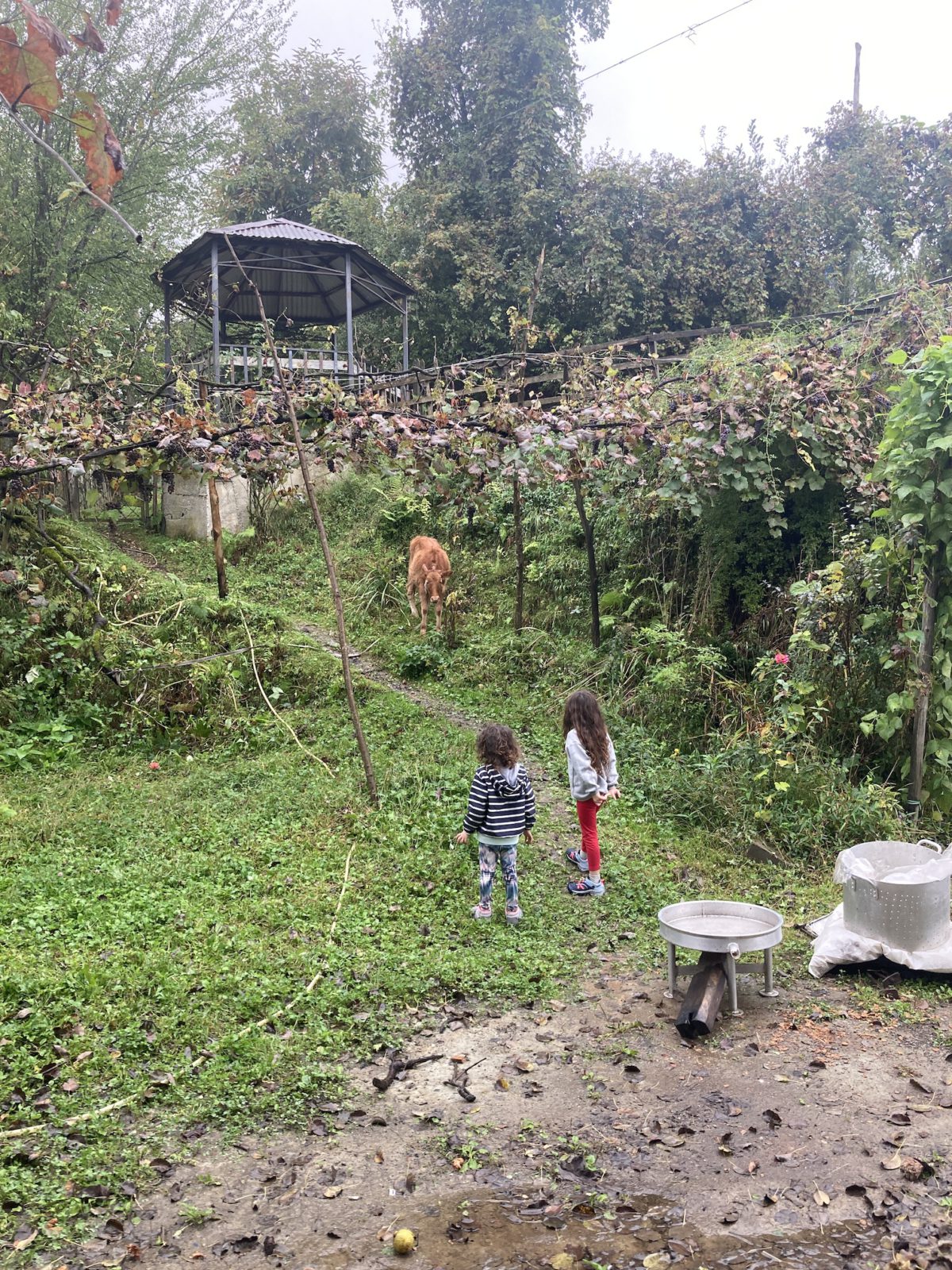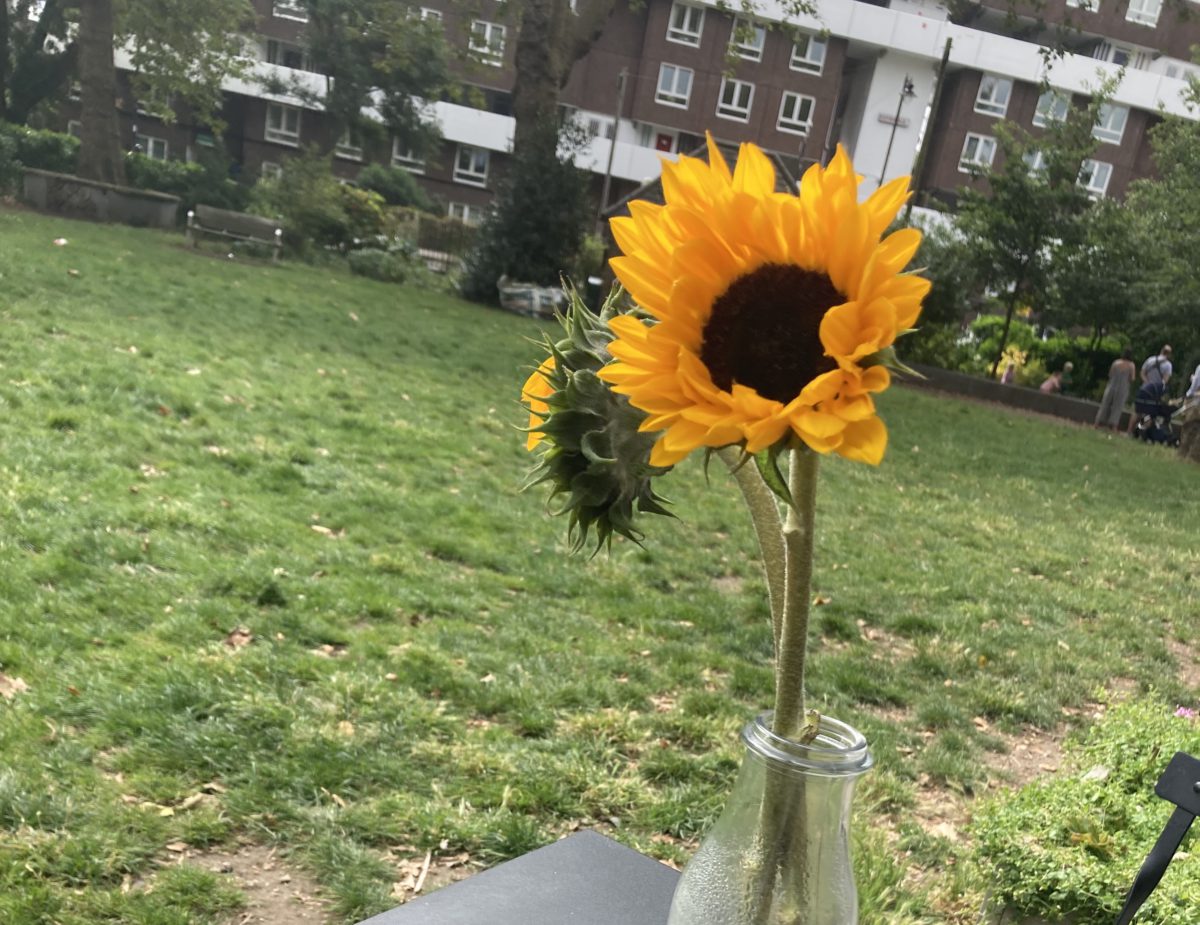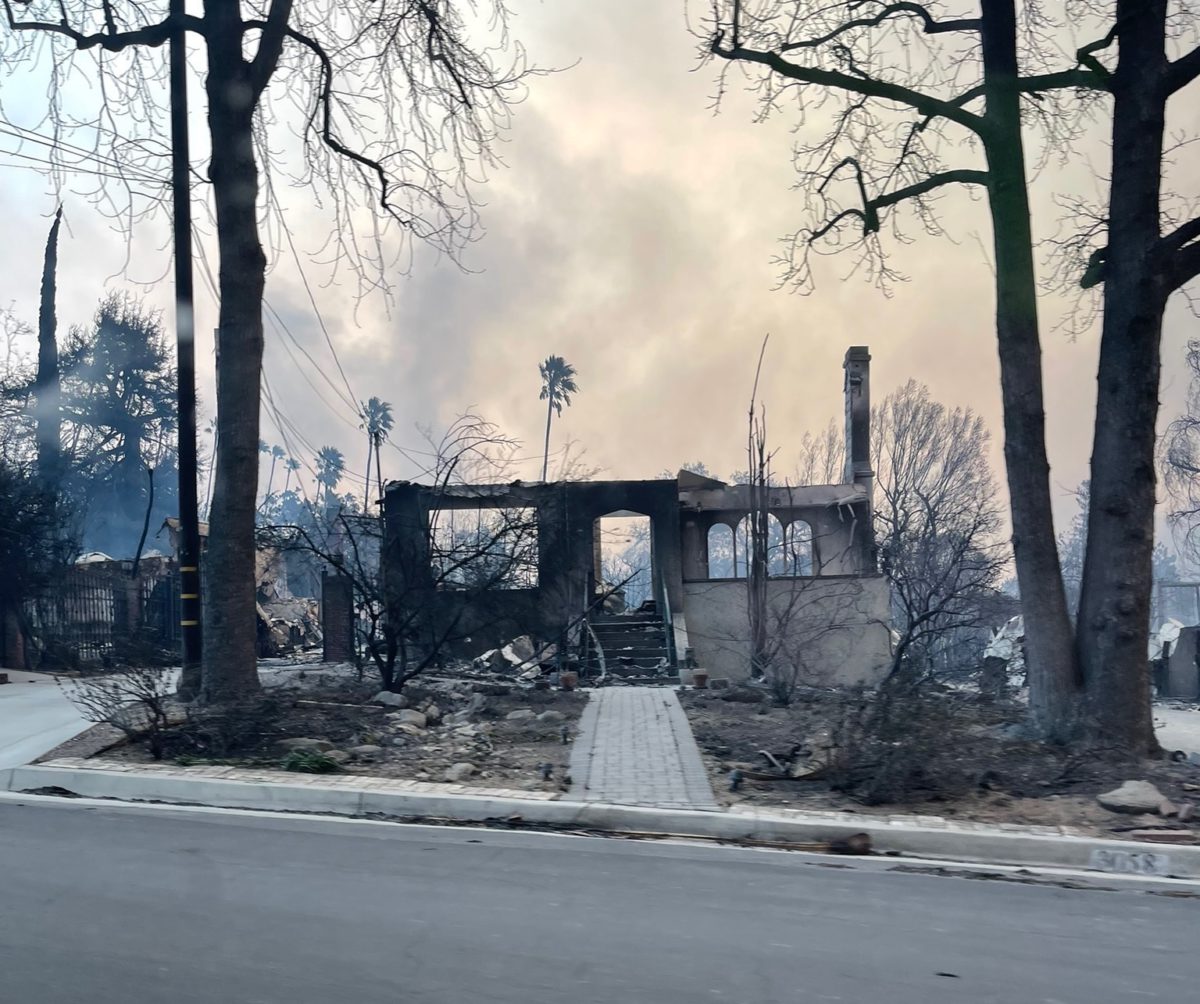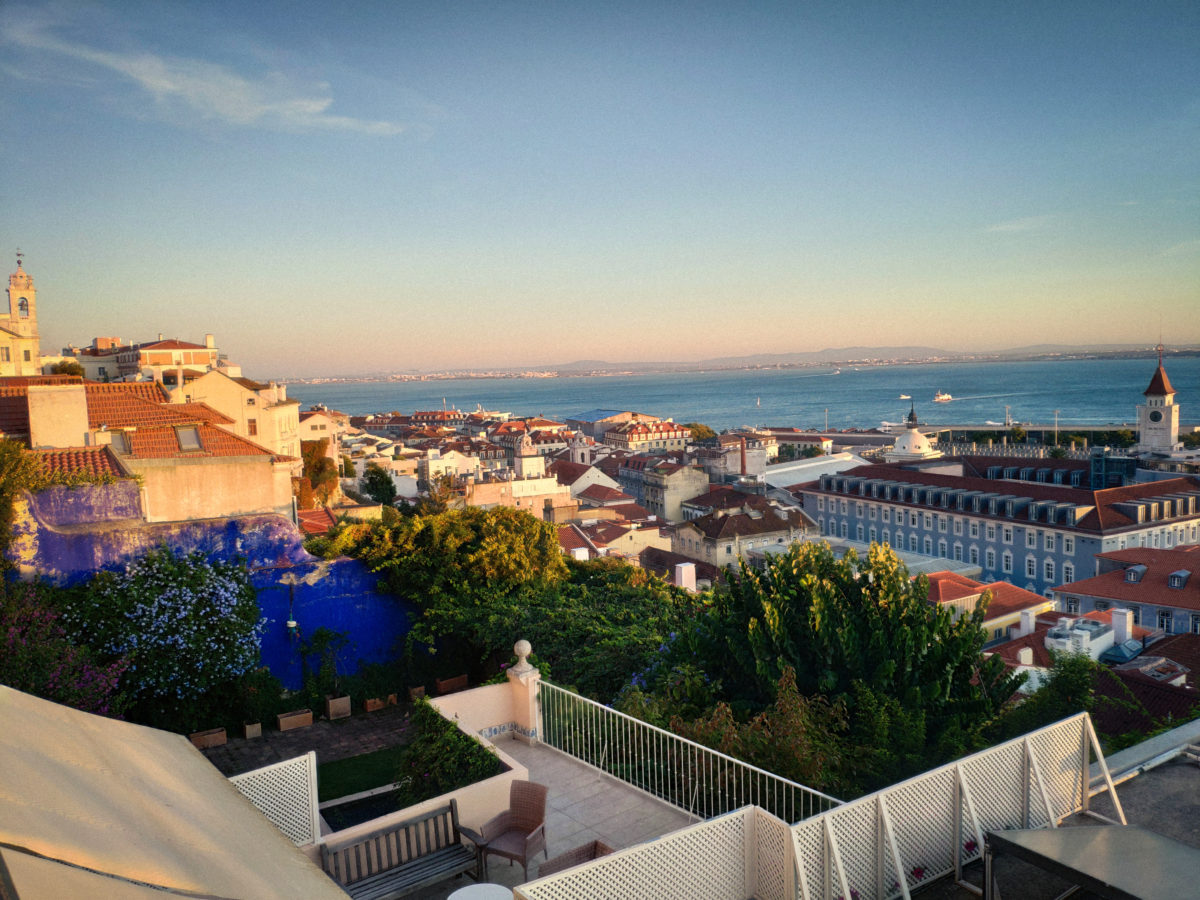
“LISBON IS THE CITY OF FERNANDO PESSOA,” an acquaintance told me before I left. This is one of two things that people seem to know about the city. The other is that there was an earthquake at some point. Fewer, even, know of Jose Saramago, the Nobel laureate. But as much as Pessoa is an interesting figure, I came to Lisbon in search of Paris. Not the Paris of tourists, but the Paris of the famed “Lost Generation” which roamed its streets in the Jazz Age. Portugal has become a magnet for artists in recent years. Ai Weiwei, the infamous contemporary artist, is one among the locust swarm of celebrities who have bought property in Portugal.
On my walks across the city, I half expected Gertrude Stein and her entourage to pop out of an alleyway under the gentle sway of the white sheets that hung along the windows. I could almost see their shadows roam the basalt and limestone mosaic-covered sidewalks, a defining feature of Portugal and its former colonies, an art as old as civilization itself with origins in ancient Mesopotamia. But in search of the Lost Generation it was easy to get lost too, particularly among the throng of self-absorbed tourists.
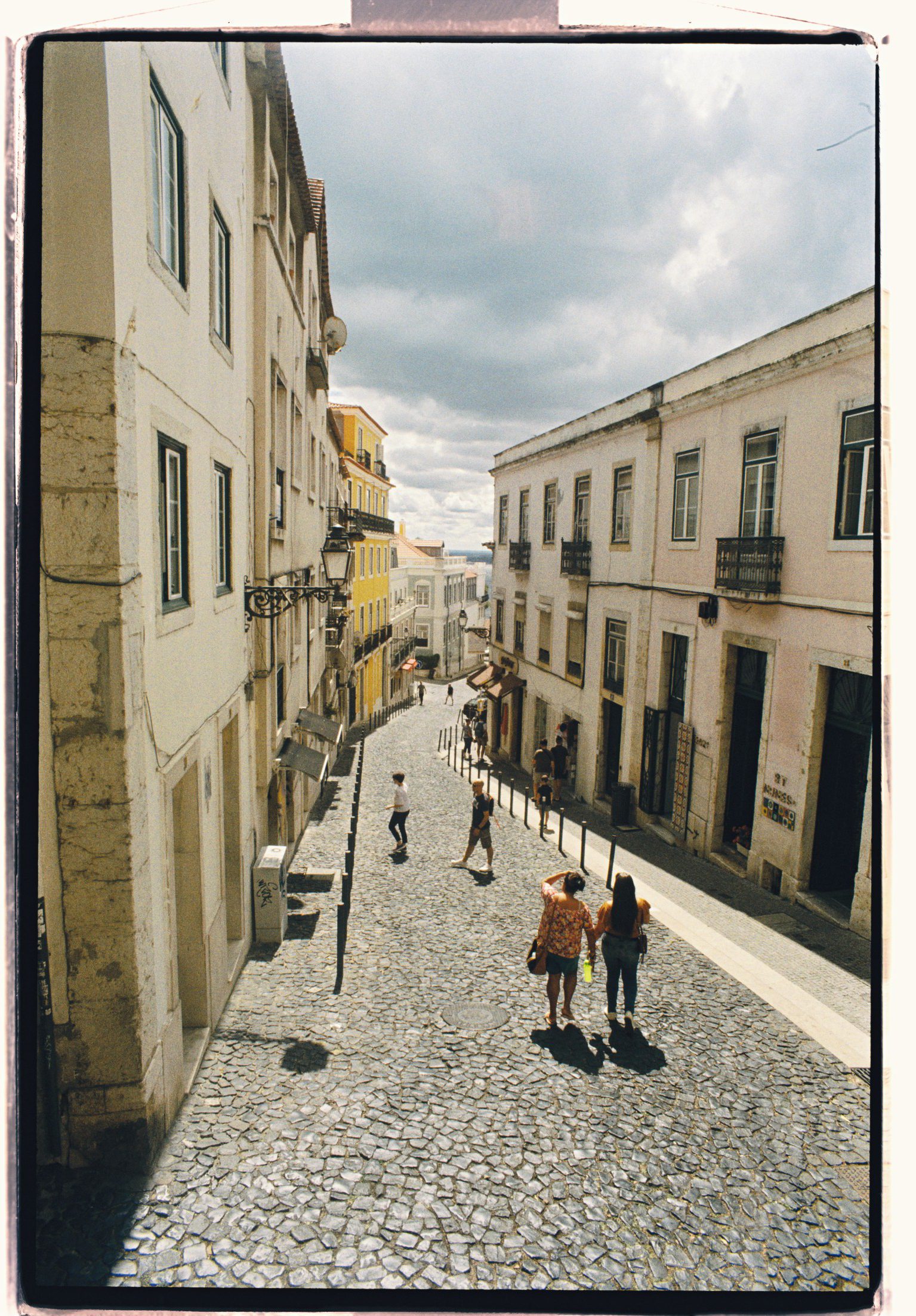
I flew over in an impulsive move worthy of a Camusian novel. Tickets with the National carrier, TAP, are relatively cheap and, depending on the season, can even outdo low-cost carriers like Ryan Air. I checked into a windowless studio apartment within the walls of a Moorish fortress, likely built by Phoenicians and expanded successively as each new regime settled in to rule over the surrounding hills. The small, enclosed neighborhood, full of labyrinthine alleyways, was erected by the Berbers in the 10th century. It is reminiscent of an older version of Montmartre, a blend between a pre-war village and an ancient Roman urbe. As in Rome there are seven hills in Lisbon, but the city graced the river long before the fratricide in Italy. In fact, the city itself dates back to 1200 BCE, with evidence of human settlement in the area dating back over 30,000 years, making it the second oldest capital in Europe, next only to Athens.
As I passed hidden cathedrals from the 12th century with the sting of salted codfish in my nose, I could not help but feel as though my airplane had been a secret time machine. Whenever the bells chimed as I overlooked the city from one of its miradouros—viewing platforms scattered about the hills—this notion seemed to me confirmed. The Tagus at sunset is worthy of a thousand novels. As the sun flares over the Atlantic the river turns marmalade orange, and the small sailboats transform into the carriers of souls bound for a distant paradise. Faced with this view it is not difficult to understand why people still give credence to Ulysses being the origin of the name Lisbon—the Roman town went by “Olisipo.”
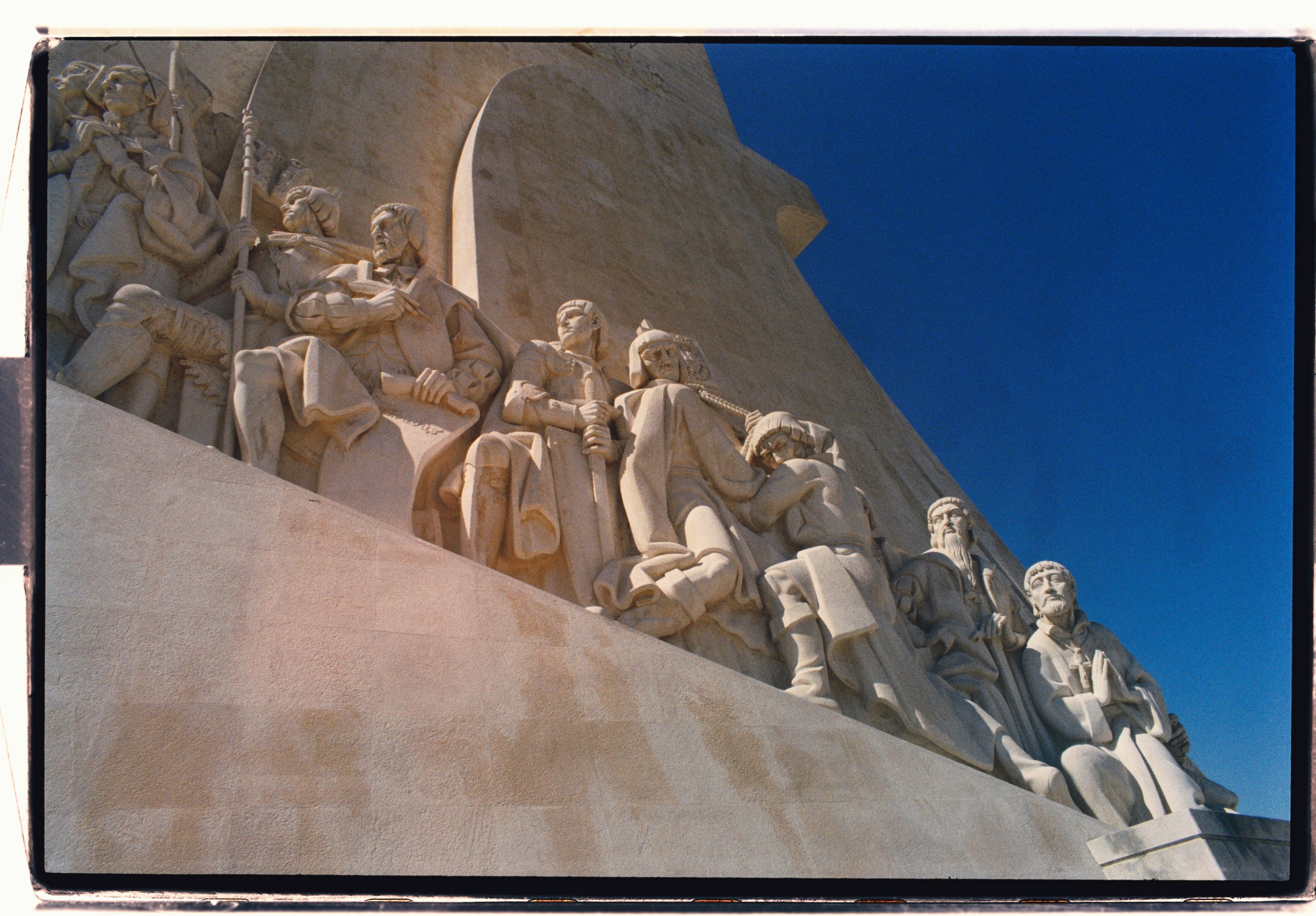
On the modern banks of the river stand monuments to Portugal’s great achievement: the first known circumnavigation of the globe, an achievement now forgotten to everyone but the Lusophones. At the heart of town marble steps descend into the waters. Here, pillars tell us the tale of the Kings and Queens of Portugal who, in early modern times, were the only heads of state to brave the high seas on visits to their colonial possessions dotted across the world. In the Napoleonic Era, they even moved their capital to Rio de Janeiro, making Portugal the only European state ruled from a former colony. These maritime feats are woven into the fiber of Portuguese identity. Pessoa and Luís de Camões both captured this in their respective verses, echoes of each other separated by three centuries. Between 1553 and 1570, Camões found himself roving the Indian Ocean. Pessoa, though he spent most of his life couch surfing through Lisbon, spent some of his formative years in the former English colony of Durban, in South Africa. In Mensagem, Pessoa acutely captures this longing for the sea that continues to haunt Portugal to this day: “The sea with an end can be Greek or Roman: the endless sea is Portuguese.”
Beyond the marble steps that descend into the river sits a great plaza covered in white gravel and enveloped on three sides by monolithic Tuscan yellow structures. Following the devastating earthquake and tsunami of 1755 which destroyed 80% of the Imperial capital, the area was completely remodeled by an autocratic minister of the enlightenment, the first Marquis of Pombal. At the center of the world’s first earthquake-resistant neighborhood, today called the Baixa Pombalina, Pombal placed the imposing square, the Praça do Comércio. Though many new squares erected at the time served as both a safe space to take refuge in the event of an earthquake and a place for leisure and commerce, this 175m x 175m open space was undoubtedly a demonstration of power, a last testament to the wealth of the Portuguese Empire. I stood in the midst of this splendor accompanied by swarms of Germans, Spaniards, Frenchmen, and Americans, all drenched in the sweat of October heat. With smartphones in hand, they waited in line for a red trolley, one designed specifically for the selfie stick crowd. Pecking around the tables of the café Martinho da Arcada, opened in 1782 and one of Fernando Pessoa’s watering holes, people in Ray-Bans snapped photos of their food. I knew there were quainter sights to see. As I crossed a street that passes through the far side of the square, a man in a padded bomber jacket approached me with his hands in his pockets.
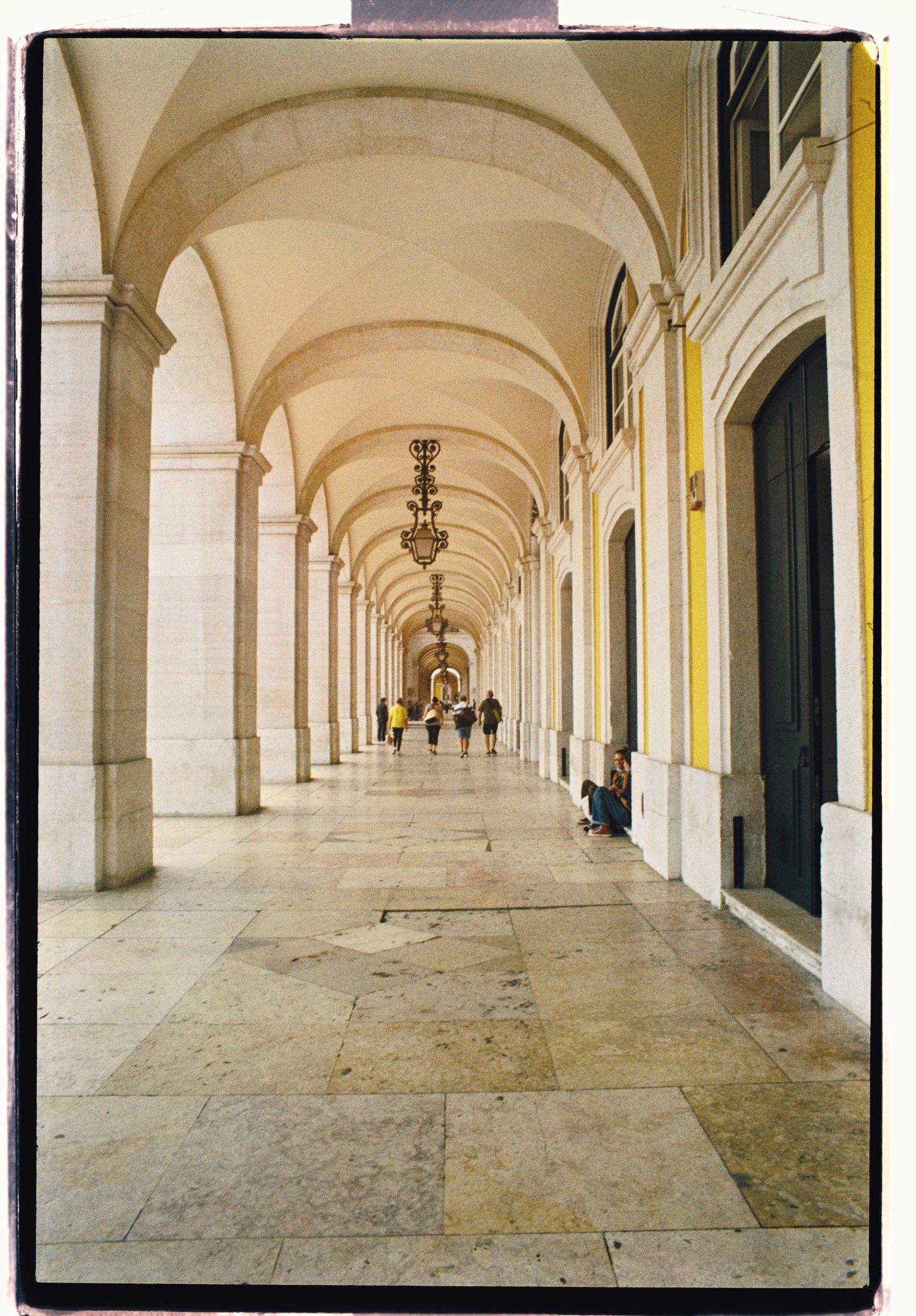
“Hashish?” he whispered.
Though Portugal is famed for its substance decriminalization and the subsequent drop in crime rates, dealers and con men still loiter about the main tourist spots in search of victims. Ignoring the man’s presence, I turned left onto a curving uphill street. The red tourist trolley screeched past me. A small bridge over two buildings in an alleyway caught my attention. Though not hard to come across, they are a reminder of a pre-earthquake Lisbon. Upon inspection, graffiti worthy of Pompeii popped out in red lettering on a crumbled wall: “Digital nomads = Yuppies.” Though I did not immediately know the meaning of a yuppie, I knew that “digital nomads” was the label embraced by a horde of thirty-somethings who claimed to have unlocked the conjunction of the bitcoin bubble and remote work, and who now flooded into Portugal more for its sun and substances than for its history.
In another alleyway on my way to a book launch, a man and a woman sat on a sidewalk each holding a hand-rolled cigarette. Above me a young brunette pulled in a dozen white sheets from a clothesline. It hit me that, here and now, this prevalence of white sheets meant a certain kind of death. The white hotel sheets had replaced the eclectic colors of Lisboetas’ clothes. The brunette wore a matching white uniform, and the smokers, blue denim aprons. The only open shops were sardine-packed with overpriced Chinese-made trinkets printed with Portuguese themes. Everywhere traditional shops had been closing, replaced by hotels, Airbnbs, and Chinese souvenir vendors. In 2019, before the pandemic, tourism accounted for almost 20% of the country’s GDP. The government has promised to combat the dislocation of Lisbon’s residents by tourists, but Covid-19 put a temporary stop to any concrete action. I looked at my watch to make sure that I was late. I doubted that the Fitzgeralds, Hemingway, or Picasso would have been punctual.
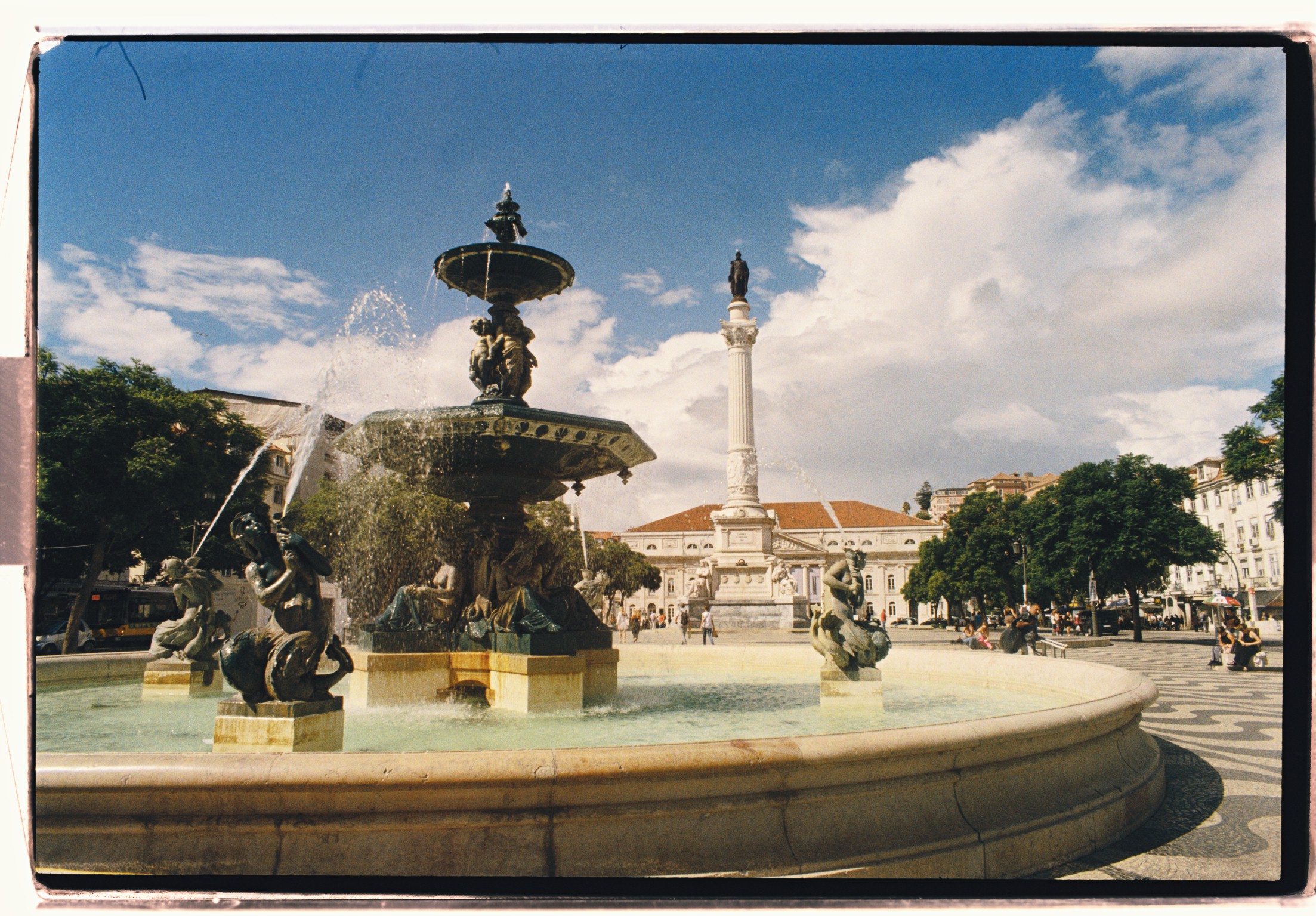
Eventually, I made it to a book release at the Mombak Cultural Association, located in a property from the eighteenth century, featuring large modern glass panes overlooking the river. At the head of the room was a sunken rococo couch in need of restoration. Adjoining the cultural association lies one of Lisbon’s most expensive hotels in the shape of a converted 18th century townhouse. The gossip was that the hotel owner, in a desire to become a modern Medici, ceded the space to the association. To my dismay my watch had lied and I was as timely as a Swede, which in Lisbon meant that I was an hour early. When the speeches started the author’s voice broke, and tears ran down his cheeks. With a sun beaten face, he told us of the first time he set eyes on the Tagus twenty years prior. He had fallen in love with its golden color. I could not tell if he still loved it.
Afterward, I found myself in a restaurant across the street where old pharmaceutical bottles were displayed in walls entirely covered by walnut cabinets. I sat with a journalist, a magazine editor, and a professor of finance. The bearded professor tried to keep up with the drinking. Accustomed to the robbery of northern Europe I trembled before the bill. But when I saw the tally, I felt that they must have made a mistake, for it seemed it was we who were the criminals. As in Picasso’s Montmartre, where artists flocked for the cheap housing and tax-free wine, the vinho here was cheaper than dirt, even with the tax. At the local supermarket I could pay €3 for a bottle of quality wine, sometimes less. Maybe this was the true attraction for those of a romantic disposition. The only difference was that rent was no longer reasonable. Tourists, digital nomads, and speculators have consistently driven up property prices in Lisbon, with yearly increases of almost 10% during the last decade. The average wage has not increased nearly as much. As a foreigner I paid without a second look and drunkenly left to find the author with the sun beaten face.
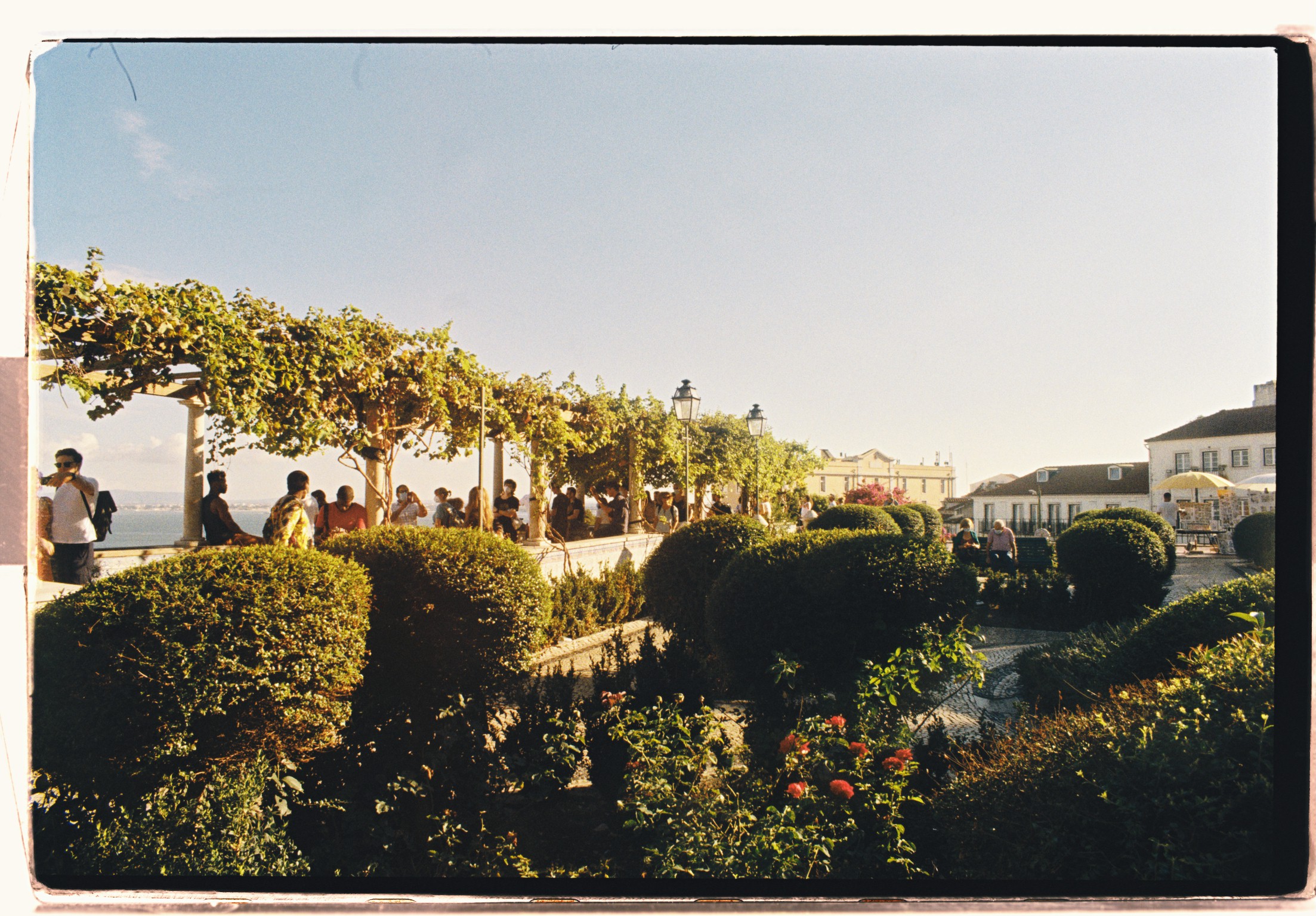
There was only one traditional tasca left in the entire neighborhood, the only place where they still knew what a Portuguese petisco was, or who even spoke the language. The tavern’s walls were tiled with hand-painted stories of old empire, Moors, and Romans, refined like the rest of the city façades and the meticulously hand-placed pavement stones. When patterned with geometric shapes, these tiles tell of the Islamic legacy of the peninsula. When covered in blue on white motifs, they portray a lost Portugal, the country that once mastered the seas, whose quaint Catholic landscapes stretched across the globe. The tables were covered in paper towels. Pots and skillets banged. I could barely hear a thing. This place did not feign tradition.
Holding court over an amalgamated row of tables was the author, yet again. A pot-bellied angry old man who barely pronounced a single vowel kept us fuelled with beer. Even in a land of wine, beer seemed an essential counterbalance. A couple, a journalist and photojournalist, sat next to me. They were younger than the rest. I could hear them, for they held a shouting match about some great acquaintance they had in common at The New York Times. “A true genius,” they repeated over one another. Here at last, I thought, was the diaspora I had sought: “the painters, poets, and plays” as sung by Emma Stone in Damien Chazelle’s La La Land (2016).

At midnight the eclectic group scattered; editors and friends first, followed by the silver haired, until only I, the author, and the younger couple remained. When the tasca closed we headed to a bar. The beer was double the price and half as good. We stood in a street packed with people in polyester clothes. We discussed why it was that Azoreans sounded as though they spoke Occitan, and why it was that we Portuguese speakers understand Catalan better than Castilian. I have no good answer now, and I doubt anyone had one then, though I am sure someone thought they did. When discussing Lisbon, the photojournalist, a Carioca born and bred in Rio de Janeiro, remarked:
“It is not like it used to be.”
He had not known Lisbon twenty years ago, so I did not understand his point of reference. But his partner and the author both agreed. My plastic beer cup had disappeared when I returned from the toilet. Soon we outlasted the frenzied youths, and then the bar itself. The journalists went their way, and the author and I walked together in the opposite direction. Here and there we crossed abandoned surgical masks stuck on wet streaks of urine. What once had been the lively streets of poets echoed now with the wild shrieks of adolescence. Close to the bronze sculpture of Pessoa, just in sight of a statue of Camões, the author stopped, turned around, and burst out in Swedish:
“They don’t care about poetry anymore; they don’t care about literature. Look at them!”
In front of us stood a crowd of hysterical teenagers laughing as a girl fell off an electric scooter. Most of them filmed it with their phones. Few people had ever cared for poetry, I thought. I did not say this though. He had been to Lisbon before the monotone bedsheet standards had conquered its sky. Instead, I rallied with him against the decay of the poetic spirit.
“What will your generation write about? Nothing will be unique. Lisbon, Prague, Shanghai. It will all be the same,” he said.
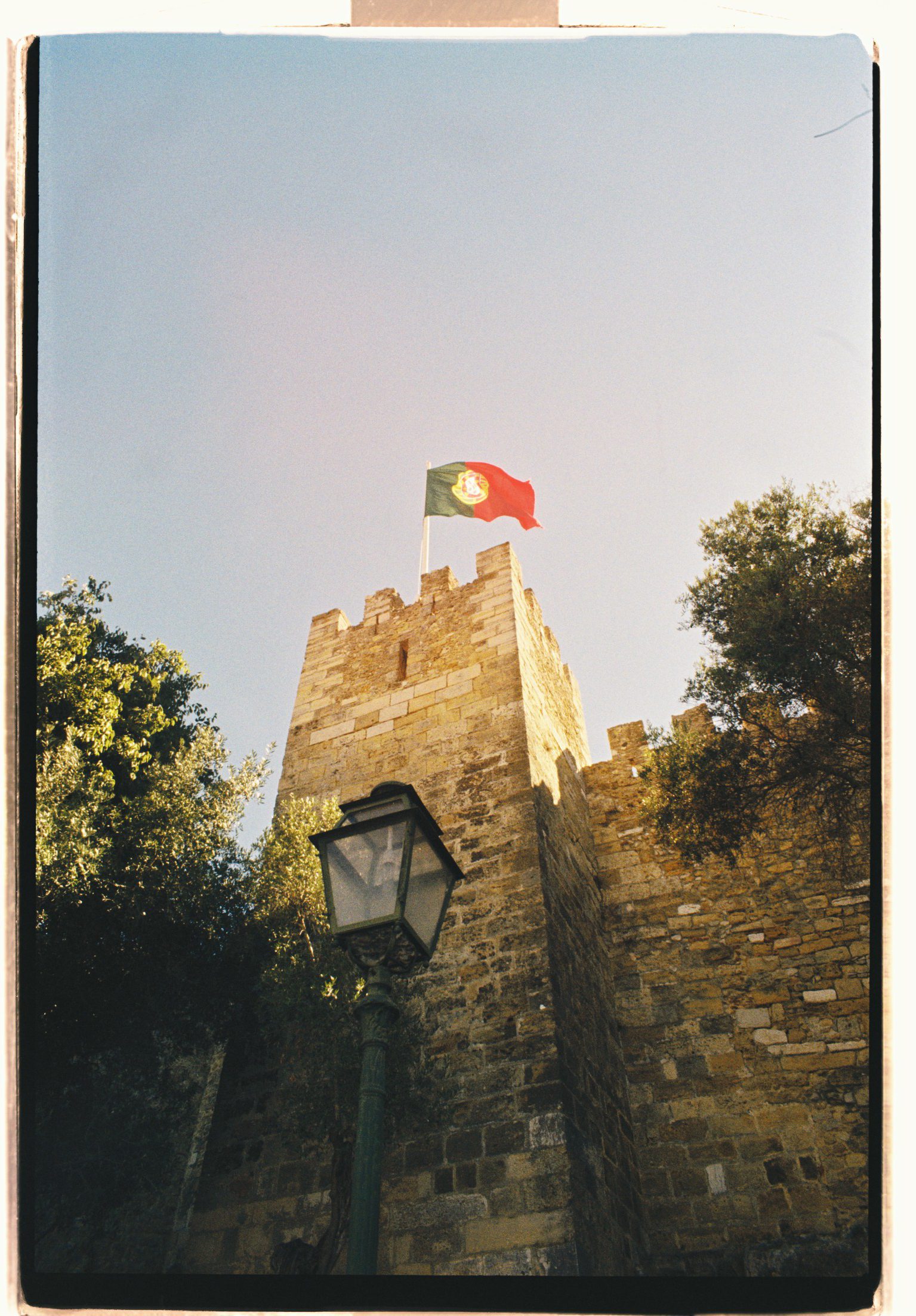
We parted ways in the Pombaline Baixa, the earthquake-proof neighborhood which I had passed through earlier in the day. As I made my way up to my Phoenician-Roman-Berber-Lusitanian castle, under the tender light of the streetlamps, and past permanently closed cafés that once attracted the avowedly intellectual crowd, I could not get the image of those kids in plastic clothes out of my head. What was I to write about? As much as I would have liked to imagine otherwise, my bedsheets too were white. Was I just another digital nomad? Were we writers of the digital age bound to feast on the mortal remains of once poetic ports in search of authenticity? I wondered whether this city had been all that romantic twenty years ago, and if Paris a century past had been such a feast after all. I wondered whether in twenty years’ time I would cry on the banks of the Tagus for the lost Lisbon of my dreams. I wondered if I had come too late, or too early.

